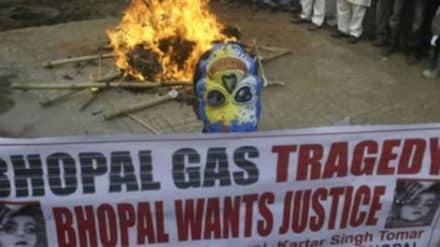Netflix has just released a mini-series based on the true story of 1984 Bhopal gas tragedy – ‘The Railway Men’ on November 18. Produced by YRF Entertainment, this mini-series is a historical-drama about the railway workers who saved many lives during the 1984 Bhopal disaster.
Here’s the real life story of what exactly happened during the intervening night of December 2 and December 3, 1984:
The worst industrial disaster in the world killed several hundred thousand lives four decades ago. The Union Carbide India Limited pesticide plant in Bhopal, Madhya Pradesh had a chemical leak of methyl isocyanate which is a highly toxic gas.
The leak occurred in the early hours of December 2, 1984. The plant had already been facing malfunctioning safety systems and many valves were in poor condition. The company had already faced multiple leaks in the years 1981, 1982 and 1983.
The gas leak in the middle of the night left people confused as no one could understand the foul smell in the air. People collapsed on the ground like flies and it created panic and caused chaos as people rushed to save their lives.
The initial effects of the gas leak left people with coughing, eye irritation, vomiting and shortness of breath. Several people lost their lives the following morning due to circulatory collapse. Individuals who did not die of the exposure to the toxic gas, went on to suffer from cancer, blindness and financial difficulties.
The tragic Bhopal gas disaster of 1984 resulted in the immediate closure of the plant to outsiders by the Indian government, leading to a lack of transparency in disclosing crucial data. Investigations were primarily handled by Indian scientific bodies and law enforcement. Union Carbide Corporation (UCC) responded by sending a technical team to assess the situation, but the chairman, Warren Anderson, was put under house arrest and urged to leave India promptly.
The healthcare system was overwhelmed with a shortage of qualified medical personnel and inadequate knowledge about treating the victims of the gas leak. The aftermath witnessed mass funerals, environmental damage, and challenges in providing supplies to affected areas. Despite safety concerns, the remaining toxic gas was emptied from tanks, leading to further evacuations.
Both UCC and the Indian government faced criticism for their handling of the disaster, with accusations of prioritizing their interests over the victims’. Legal proceedings ensued, with initial settlements proposed by UCC being rejected. Eventually, an out-of-court settlement of $470 million was reached in 1989, which UCC paid immediately.
The aftermath involved ongoing legal battles, including attempts to extradite Warren Anderson, court appeals, and orders for medical coverage and funding for victims. Despite various legal actions, the victims’ quest for enhanced compensation faced setbacks, with courts dismissing appeals for increased restitution. The long-standing legal battle continued for years, with the passing of key individuals involved in the disaster, ultimately resulting in the Indian Supreme Court dismissing a petition for enhanced compensation in March 2023, marking another chapter in the prolonged struggle for justice and restitution for the Bhopal gas tragedy victims.
